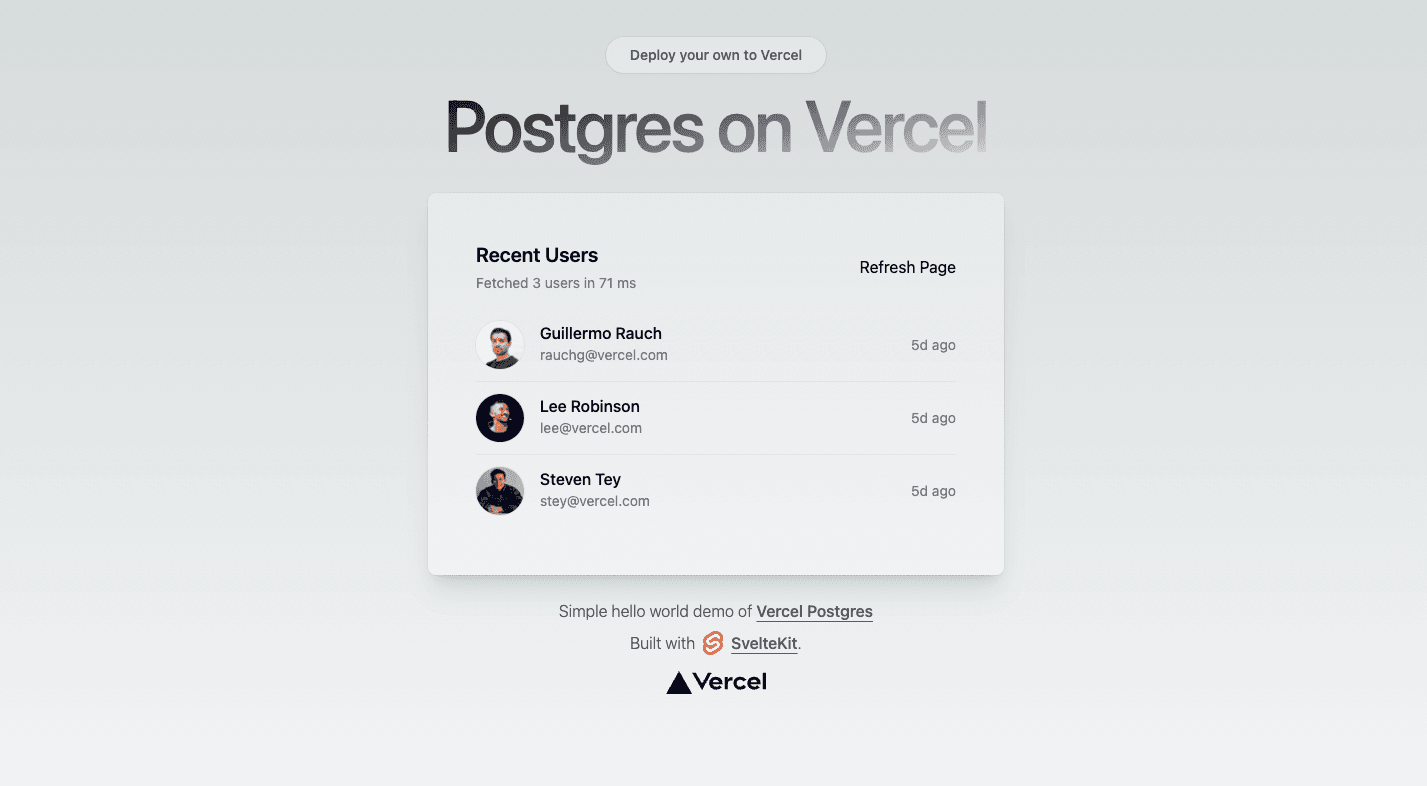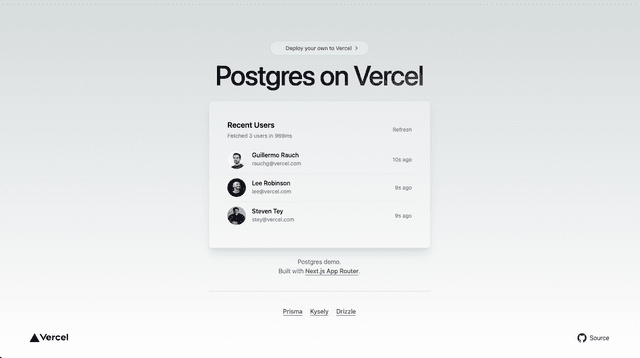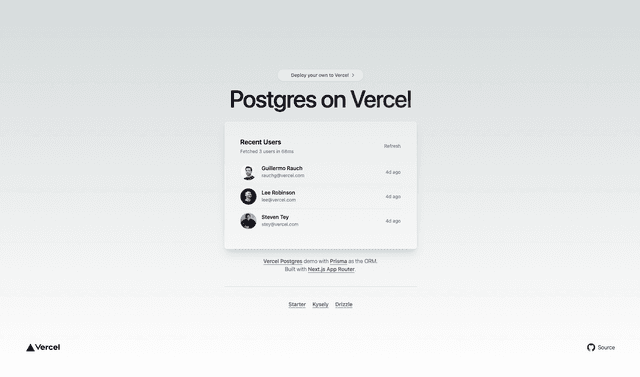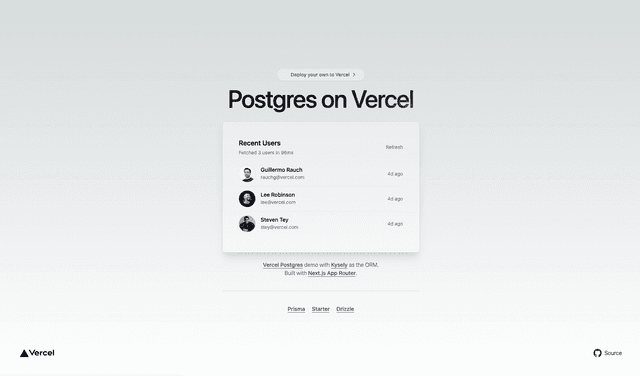
Postgres SvelteKit Starter
Simple SvelteKit template that uses a Postgres database.
Demo
https://postgres-sveltekit.vercel.app/
How to Use
You can choose from one of the following two methods to use this repository:
One-Click Deploy
Deploy the example using Vercel
Clone and Deploy
Execute the following command to download the example into the my-project folder:
Once you've created the project and installed dependencies with pnpm install, copy the .env.example file in this directory to .env.local (which will be ignored by Git). Then open .env.local and set the environment variables to match the ones in your Vercel Storage Dashboard.
Alternatively, if you have setup a project already and you have installed the Vercel CLI, you can also pull the environment variables using the following command:
Next, run SvelteKit in development mode:
Deploy it to the cloud with Vercel (Documentation).
Related Templates
Postgres Next.js Starter

Vercel Postgres + Prisma Next.js Starter

Postgres + Kysely Next.js Starter
